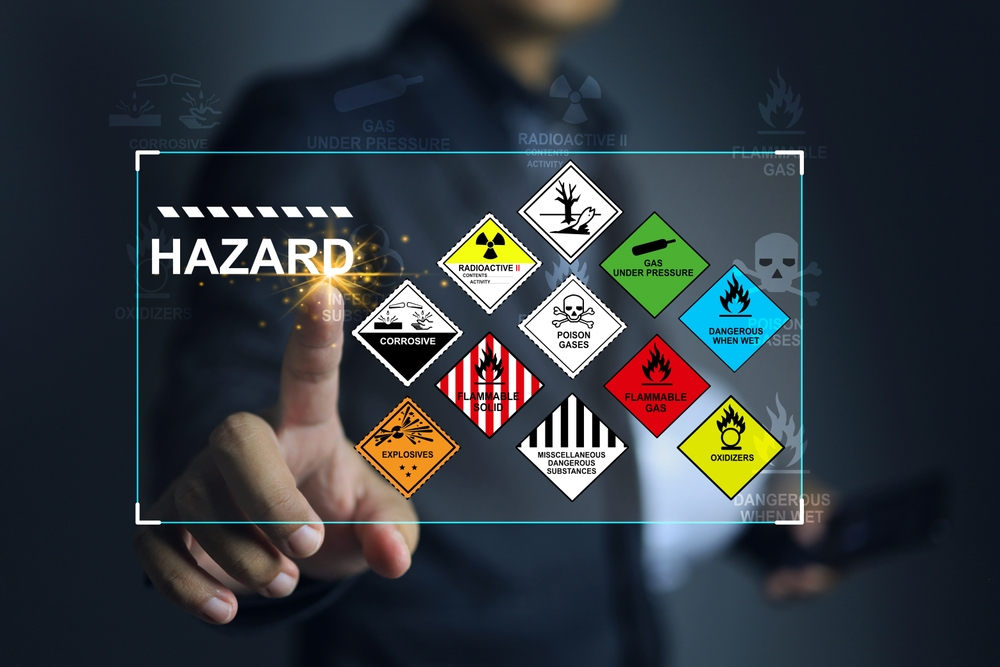The Best Strategy To Use For Roar Solutions
The Best Strategy To Use For Roar Solutions
Blog Article
A Biased View of Roar Solutions
Table of ContentsThe 8-Minute Rule for Roar SolutionsThe smart Trick of Roar Solutions That Nobody is DiscussingSee This Report about Roar Solutions
In such an ambience a fire or explosion is possible when 3 standard conditions are satisfied. This is typically described as the "hazardous area" or "burning" triangular. In order to protect setups from a potential explosion an approach of evaluating and identifying a possibly dangerous area is required. The objective of this is to make certain the appropriate option and setup of devices to ultimately prevent a surge and to make certain safety and security of life.
(https://www.video-bookmark.com/bookmark/6634779/roar-solutions/)
No equipment needs to be installed where the surface area temperature level of the equipment is greater than the ignition temperature level of the offered risk. Below are some common dirt unsafe and their minimal ignition temperature level. Coal Dirt 380C 225C Polythene 420C (thaws) Methyl Cellulose 420C 320C Starch 460C 435C Flour 490C 340C Sugar 490C 460C Grain Dust 510C 300C Phenolic Material 530C > 450C Aluminium 590C > 450C PVC 700C > 450C Soot 810C 570C The possibility of the danger existing in a focus high sufficient to create an ignition will certainly differ from area to area.
Unsafe area electric equipment possibly created for use in greater ambient temperatures. Area Fixing By Authorised Employee: Complex screening might not be called for nonetheless particular treatments may require to be complied with in order for the equipment to maintain its third event score. Each piece of devices with a hazardous score need to be reviewed independently.
Roar Solutions Things To Know Before You Get This
The equipment register is a detailed database of equipment documents that consists of a minimum collection of areas to determine each product's place, technical specifications, Ex-spouse category, age, and ecological information. This info is crucial for tracking and managing the equipment successfully within unsafe areas. In comparison, for routine or RBI sampling assessments, the quality will be a combination of Detailed and Close evaluations. The proportion of Comprehensive to Close assessments will be figured out by the Tools Threat, which is assessed based on ignition threat (the possibility of a source of ignition versus the chance of a flammable atmosphere )and the harmful location classification
( Zone 0, 1, or 2). This variant will certainly additionally affect the resourcing needs for job preparation. As soon as Lots are specified, you can establish sampling strategies based upon the example size of each Whole lot, which describes the number of random equipment products to be examined. To determine the called for example dimension, 2 aspects require to be reviewed: the size of the Lot and the category of examination, which suggests the level of initiative that ought to be applied( minimized, normal, or raised )to the inspection of the Whole lot. By combining the classification of evaluation with the Great deal size, you can then establish the appropriate being rejected requirements for a sample, indicating the allowed variety of malfunctioning items located within that sample. For even more information on this procedure, please refer to the Power Institute Guidelines. The IEC 60079 standard suggests that the maximum period in between inspections ought to not go beyond 3 years. EEHA inspections will certainly also be performed beyond RBI projects as component of scheduled maintenance and devices overhauls or repair services. These inspections can be credited towards the RBI sample sizes within the affected Great deals. EEHA assessments are performed to identify mistakes in electrical equipment. A weighted racking up system is crucial, as a solitary tool may have several mistakes, each with differing degrees of ignition threat. If the mixed rating of both assessments is less than twice the mistake score, the Lot is regarded acceptable. If the Lot is still taken into consideration inappropriate, it should go through a full examination or reason, which may cause more stringent inspection procedures. Accepted Lot: The reasons of any mistakes are recognized. If an usual failure setting is found, extra equipment might require assessment and repair work. Faults are identified by severity( Safety and security, Integrity, House cleaning ), making certain that immediate problems are evaluated and attended to quickly to alleviate any kind of effect on security or operations. The EEHA data source need to track and videotape the lifecycle of mistakes along with the corrective actions taken. Applying a robust Risk-Based Assessment( RBI )strategy is critical for guaranteeing conformity and security in managing Electric Tools in Hazardous Areas( EEHA) (Roar Training Solutions). Automated Mistake Rating and Lifecycle Monitoring: Easily handle faults and track their lifecycle to improve examination accuracy. The intro of this assistance for risk-based examination additionally reinforces Inspectivity's placement as a best-in-class option for governing conformity, as well as for any type of asset-centric examination usage instance. If you want discovering more, we invite you to request a demonstration and discover just how our remedy can transform your EEHA monitoring procedures.
The 6-Minute Rule for Roar Solutions

In terms of eruptive risk, an unsafe area is an environment in which an explosive atmosphere exists (or might be anticipated to be present) in amounts that need special preventative measures for the building and construction, installation and usage of devices. hazardous area course. In this post we check out the challenges encountered in the work environment, the risk control procedures, and the needed competencies to function safely
It issues of contemporary life that we manufacture, save or take care of a variety of gases or liquids that are deemed combustible, and a range of dirts that are considered combustible. These substances can, in particular problems, form eruptive atmospheres and these can have significant and awful effects. The majority of us are acquainted with the fire triangular get rid of any kind of among the 3 components and the fire can not happen, however what does this mean in the context of hazardous areas? When damaging this down into its most basic terms it is essentially: a combination of a particular amount of launch or leakage of a particular material or material, blending with ambient oxygen, and the presence of a source of ignition.
In most circumstances, we can do little about the levels of oxygen airborne, however we can have considerable impact on resources of ignition, for instance electric devices. Hazardous locations are documented on the unsafe area classification drawing and are recognized on-site by the triangular "EX-SPOUSE" indicator. Right here, among various other essential info, zones are split into three kinds depending on the hazard, the possibility and duration that an explosive environment will exist; Zone 0 or 20 is considered the most unsafe and Area 2 or 22 is deemed the least.
Report this page